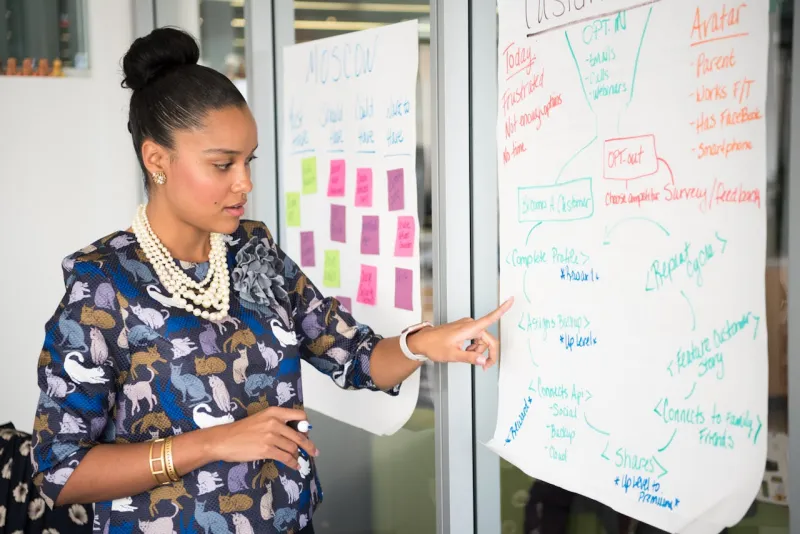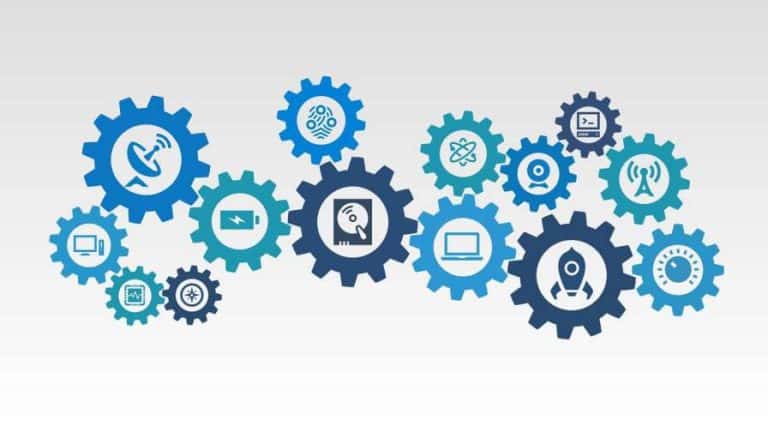18 Interpersonal Skills: Meaning & Real Life Examples
As social creatures, humans have to accumulate “social experiences” that over time influence greatly their personal and professional lives. Sometimes, this accumulation of social experiences and the respective interpersonal skills that are developed in each of them are clearly noticeable, but often they are not.
Have you ever had a friend or colleague tell you that you’re a great listener, or that you have charisma, and that is why you have the ability to influence others, grab their attention, tell great stories, or make people feel better with your speech or with a simple casual conversation? If yes, then that is because you have key interpersonal skills that help people see you like that. If not, then you have room for growth, and learning more about interpersonal skills is key.
What are the interpersonal skills that help you or anyone for that matter to really stand out and succeed in their personal and professional lives and how to develop them? This article will share some real-life examples of social experience and their respective interpersonal skills. Enjoy!
18 Interpersonal Skills: Meaning & Real Life Examples
1. Active Listening
Let us imagine that we are having a conversation with a friend and we are talking about an issue we had at work, and we would like some advice to know how to proceed.
However, we are trying to explain to them the big picture, but she keeps trying to give solutions even before we finished talking. How would you feel?
“Listening brings about changes in people attitudes toward themselves and others; it also brings about changes in their basic values and personal philosophy. People who have been listened to in this new and special way become more emotionally mature, more open to their experiences, less defensive, more democratic, and less authoritarian”.
Carl Rogers & Richard E.Farson
Active listeners don’t talk or try to advise before the other party has finished sharing their message; listening attentively until the end, shows respect for what is being said, and helps you to connect with the person.
2. Emotional Intelligence
Emotional intelligence refers to psychological abilities, which involve feeling, understanding, controlling, and modifying others’ own emotions; when we are emotionally intelligent, we can manage emotions satisfactorily to obtain positive results in our relationships with others.
According to a survey by Talent smart, the QE (Emotional Quotient) may be more decisive for career success than the famous IQ (Intelligence Quotient). The survey showed that about 90% of employees best evaluated by their employers have good management of their emotions.
One example that illustrates emotional intelligence is when we are in a rage about our day that went bad, we went to pick our journal. Our dog ripped it off, we were hoping to read it since the review of our article about the importance of feedback would be there, and finally, we have to go to our family husband, and our aunt keeps asking about our husband (that we don’t have plans on having).
A person who lacks emotional intelligence would have been showing everyone how her day wasn’t good and act impatient.
Since we are emotionally intelligent, we recognized that this rage is not about how we told our aunt a hundred times we will not get married but about how we visualized something out of our control. Now we are pissed but without exteriorizing to people that don’t need this energy from us.
3. Giving and Receiving Feedback
Feedback is also the ability to give a message that needs to be told. That happens because something needs to be improved and received, which is the ability to be open to listening without getting defensive, angry, or sad but genuinely understanding and analyzing the message.
In sum, feedback is a two-fold ability to productively criticize and suggest someone’s attitudes, behaviors, and performances, to reorient and stimulate a particular individual or group action.
Let us imagine we have an exam at 3:30 pm, and when we get there suddenly the exam has been reprogrammed 30 minutes earlier than the time it was supposed to be, and nobody told us anything.
Since we didn’t get any information, later we could suggest that they could have texted hours before, if it was urgently explained so that later misunderstandings didn’t occur.
Receiving Feedback
According to Kimberly Leitch, a licensed social worker at Talkspace, receive feedback at work triggers a stress reaction on account of the judgment being made, which usually comes from someone in a position of authority.
But it doesn’t have to be like that; how we feel and form an opinion depends if we actively listen and take time to analyze and understand the purpose of the message given.
HIGHLY Recommended Article: How to React to an Insult?
Next time you get apprehensive when receiving feedback, remember:
| When Receiving Feedback I Can Be | And Still |
|---|---|
| Strong | Be soft |
| Independent | Need support |
| Grieving | Find joy |
| Direct | Be kind |
| A leader | Need guidance |
| Understanding | Have boundaries |
| Creative | Need inspiration |
| A listener | Have a voice |
Giving Feedback
It is common for people to have a negative impression when encountering the expression “feedback”; this is still very much associated with criticism and rebuke.
So it’s important, first of all, to deconstruct this image, correct feedback, worthy of being taken into account, must be respectful, contain nothing offensive or derogatory, in addition to specifically addressing issues of personal performance or professional.
Tips for using when Giving Feedback
1. Choose the appropriate place.
2. Begin by highlighting the positive points.
3. Tell him what he needs to change.
4. Listen first, speak later.
5. Be explicit and ask for honesty
The whole process of giving and receiving feedback is generally poorly understood and even more so executed. We have challenges in giving constructive feedback, and applying radical candor to it, and we also have a hard time dealing with feedback. Here’s a comprehensive blog post with 20 Tips on how to Give and Receive Feedback that I recommend checking out, to help you navigate this sort of exercise, or social experience more easily in the future.
4. Decision Making
Decision Making is the ability some people have to look at the big picture and consider who the decision is taken will affect and in which way. People in place to make decisions by representing a group and choosing what only benefits won’t many chances to be selected again.
For example, during this pandemic situation, governments for different countries decided that they would apply for work from home and lockdown so that people wouldn’t have to go through the risk of having covid-19 and overload the health systems.
If those presidents decided to act like covid-19 didn’t exist and focused on the economy, not only much more people would have died but also doctors the group who is in charge to take care of the infected would be at risk too.
“No wise decision can be made without taking into account the world as he is, but as how he will become.”
Isaac Asimov
Tips for Effective Decision-making
1. Define the problem, challenge, or opportunity
Identify what the problem or challenge the decision wants to face is essential to get it right in the choice to be carried out. Detail the situation as much as possible and rationally.
2. Collect possible solutions (data can help)
Generating possible responses or differentiated solutions is the second step to make a decision correctly. Data collection can help to acquire more knowledge and if to base the decision on something concrete.
This data may come from interviews with customers or employees, questionnaires, surveys, or reports, for example.
3. Evaluate the alternatives
After raising the possible solutions and answers to the problem presented, you should evaluate the available alternatives. Take into account the costs and benefits involving each of the solutions. Make a list of pros and cons to facilitate the visualization.
4. Select one of the proposed solutions
After raising the odds and disadvantages, we’ll probably be more prepared to choose an alternative. We should always think about which one has a tremendous potential to achieve the initial goal raised.
Combine the best alternatives or list the order that believes it is best to follow.
5. Implement the chosen option
By implementing an option, you will have already made an important decision. But this does not want to say that the decision-making process ended there.
First, because various situations will be related to it, and then by necessary follow-up, step 6.
6. Assess and monitor the impact of the decision
The trend is that by following the previous steps, your decision is likely to be appropriate to that problem or situation, but that does not mean that it should not be accompanied and even questioned.
Assess the impact of the decision on the efficiency of the problem solution and, if necessary, take a new decision to adopt the resolution as required.
The six tips shared above can help you on your way to becoming a better decision-maker. Going further though, I advise you to learn about the different decision-making models and the contexts where you apply them. You can learn a lot more about the decision-making model, by clicking on the following link to a blog post that explains in plain terms what it is all about.
5. Linguistic Skills
A linguistic skill or effective communication is when we can address a message with empathy bringing up an understandable dialogue with clarity, confidence, and willingness to listen actively.
We can take, as an example, a professional gathering that our collaborators conduct so that we can discuss feedback of our team if we have issues and suggestions, how is a situation is fitting or not.
The best way to communicate develops as dialogue and not in a monologue; if we’re talking, others can learn new ideas and concepts, but the protagonist isn’t increasing their knowledge.
6. Positive Attitude
Each of us has characteristic response traits that differentiate us from the others; some are quieter and stoic in the face of the inevitable misfortunes of their existence. Perhaps others can be impulsive and moody counterparts.
Harmful traces of impatience, or traces of exemplary serenity, are structured or formed due to genetic and social predisposition to which we are exposed, without exception.
As psychologist Floyd Allport (1955) mentioned, an attitude is a mental disposition and neurological, organized from the experience that influences the individual’s reactions to all objects and all the situations he lives in.
Therefore, a positive attitude is often the kind of attitude that is considered the most benevolent among all others, characterized by the perception or enjoyment of different situations (regardless of being difficult) and allows the person to feel stimulated to act confidently.
Let us imagine we are facing a stressful situation; we have our grandmother sick, and things at work are very handful, and still, we think things will get better because we want to believe in it.
Yes, genetic and social predisposition influence our attitude; however, our willpower to change and surround ourselves with people that can make that manageable is our choice.
How to be more positive: 3 exercises
1. Be kind and grateful
“Be thankful for what you have, and you’ll end up with more. If you focus on what you don’t have, you’ll never have enough.”
Oprah Winfrey
From the moment you thank them for the things they have, you begin to value them more instead of taking them for granted. One of the ways to exercise it is through daily gratitude.
We slave daily about things we are thankful for in our lives; it also helps to sow an inner reflection to realize how blessed our life is for having many things that others have no opportunity to have.
2. Love yourself
To learn to be more positive, we must build a healthy relationship with ourselves.
If we are okay and feel good, we’ll get our energy to be more positive and beneficial than if we have a bad relationship with our inner-being life.
For that, taking care of us inside and out, taking time to do things we like, enjoy our company. Recover that project or dream that we abandoned and allow ourselves to be the master of our life.
3. Meditation
Finally, another great exercise that will help us build a more positive and optimistic attitude is meditation. This Eastern practice is thoroughly thought out to calm the mind, reduce stress, live in the present, and feel a sense of great inner peace.
We should try to meditate for at least 15 minutes, 2 to 3 times a week.
7. Time Management
This means that time management should always be the first step in achieving everything we set out to achieve our goals.
If we want to succeed in time managing, we have to spend our time in the right places doing specific tasks; time management is related to priorities, obligations, and schedules.
“Time is the scarcest resource and, unless managed, nothing else can be managed.”
Peter Drucker
- Managing the time spent on work-life also benefits all other areas of our lives because, like that, we have more space to relax, hang out with friends, and help with creativity.
8. Organization/ Goal-oriented
A goal-oriented person is that one who has their objectives strategically organized as a form to accomplish them and has time to live life the way they wish to live without being overload.
For example, those people who have a plan and write things that they need to get done are more productive because by transcribing data, our brain understands that we will get it done at some point and not cause us a headache.
To do this, we can start by listing our To-dos instead of leaving them in memory. When we put everything on paper and out of our heads, it helps us think objectively and make the best decisions.
9. Leadership
“Leadership is like beauty, difficult to define, but we know we are before it when we see it.”
The Essence of Leader by Warren Bennis
According to Warren Bennis, leadership can be defined as the ability to translate vision into reality; to lead is to instigate the creative capacity existing in people. Who leads by example, encouraging your team with enthusiasm and inspiring confidence and willingness to grow within an organization.
For example, people most time visualize a leader as someone who is in charge that is a boss, not a leader. We can show leadership when a group of people is demotivated to move forward with a project. We transmit positivity, even in situations not so favorable, encouraging the team to move on.
According to Mike Myatt, a leadership expert, to be a great communicator, and perhaps a great leader, you need to put into practice these principles, which you have chosen for Forbes:
I. Have an open mind
The rigidity of a closed mind is the most limiting factor of new opportunities.
A leader strengthens and enriches his ideas when he proposes to debate with those who have dissenting opinions and opposing positions, aiming not to convince them to change their minds but to understand their argument.
II. Be able to listen
All great leaders know when to speak and when to keep quiet. Repeating our message to exhaustion will not have the same result of a conversation in which the other captivates, listening to, and accepting your point of view, then explaining why you disagree, if applicable.
Our message will gain more strength if we listen to each other.
III. Read between the lines
Any great leader must be very skilled in the ability to read what has not been said in a time of instantaneous communication, where there seems to be an unbridled race to say what one thinks.
We cannot forget about how our message can be perceived. The ability to perceive what is beyond verbalized discourse can differentiate it and make it extraordinary.
IV. Keep the focus on others
The best leaders can learn and compile information while communicating and propose ideas, align expectations, spread their vision, and inspire action.
It may sound counterintuitive, but if you focus more on what others want and their interests, you will learn more and more efficiently to achieve your primary goal – get your message across.
V. Replace the ego with empathy
Being frank in our communication, with empathy and zeal, rather than showing arrogance, pride, and a disproportionate ego will bring us immediate results. An over-worked and elaborate image will take the authenticity out of our message.
VI. Avoid ambiguous speeches
A transparent speech will turn doubt into trust. When a leader is trustworthy, people tend to defend their cause, something they would hardly do for a person they perceive as lacking in integrity.
It is essential to learn to be direct, avoiding rodeos that distract and disperse attention before reaching the critical point.
To learn more about leadership and what skills or traits are desirable, I advise you to spend some minutes reading this post on 23 Qualities of a Great Leader – Which one do you Possess?
10. Creativity
According to Bruce Nussbaum, Professor of Innovation and Design at Parsons School in New York, creativity is the ability to use our repertoire and solve problems in a practical way using imagination and connecting things not obviously “connectable.”
When we are talking about creativity, we should put our reference in using all other types of intelligence (emotional, social, cognitive) to do something in a different way, which no one has done it before, helping our brain create new practices.
In the 1990s, Robert Burnside, an American researcher, conducted a study that proves the extraordinary facility that the human being has to improvise. And we can observe this adaptive capacity mainly in times of crisis, such as the one we are facing – Covid-19.
- The purpose of creativity is to build environments that solve problems; in coronavirus, there are many difficulties in society.
For example, IKEA bet on a playful way to insert brand communication in the quarantine time; the home products company has created a catalog with hobbies – coloring drawings, mazes, etc. – with items for sale, increasing the interaction time of the consumer with the material.
11. Problem-solving / conflict management
Society is formed by social organizations, groups, and individuals who own perceptions and perspectives of the reality that surrounds them. Given this, conflict is present in society since each group or individual presents its convictions, which may clash.
Conflict resolution is the art of addressing differences and finding the middle ground that allows everyone to live together peacefully. The ability to resolve conflicts is almost always seen as a characteristic of leadership.
Let us imagine we are in a situation where our team-work
Strategies in Conflict Resolution
Torrego (2003) distinguishes five possibilities of styles of how people face conflicts. Therefore, and specifying, we have the following approaches:
| Method of Conflict Resolution | Description | Strategie |
| Competition | It consists of trying to achieve one’s personal goals at the expense of the other of the conflict. | The strategies used by individuals are persuasion, firmness, insistence,repetition, checking, etc. |
| Escape | The essential attitude is characterized by ignoring problems that are not facing them.When one part avoids conflict at all costs and does not directly address the problem. | The most used in this style of approach are: withdraw, delay or avoid the response, deviate from attention, suppress personal emotions, be inaccessible. |
| Commitment | Attitude based on negotiation, search for solutions that providean agreement between the parties.In this case, to reach a consensus, it is necessary that both parties are satisfied, so both parties have to compromise. | The Strategiesaimed at this style are: moderation, haggle, divide the difference. |
| Accommodation | Attitude in which the person rejects their views yields to visions ofanother part; assumes that one party ignores what it feels or wants, worrying only about satisfying the other party’s desires. Therefore, it does not oppose, yielding to what others intend. | Strategies used: to agree, to recognize one’s own mistakes, to considerDefeated, convince yourself it’s unimportant. |
| Collaboration | This style requires the cooperation of both parts in pursuit of an objectivecommon. It is intended to analyze the situation by creating alternative solutions to the problem that satisfy both parties. | As strategy Torrego (2003) points out, both parties must be aware from the outset that it is possible to combat the dichotomy “mine” and “yours” so that they can reach a consensus. |
12. Empathy
Empathy is the ability to put ourselves in the other’s shoes and feel what the other person is feeling; empathic people can fully relate without conflict – and this is a valuable skill that can open the doors to our success.
University of Houston professor and American bestseller Brené Brown defines empathy as a skill that can bring people together and make people get together to feel comfortable.
The author highlights four quick steps to demonstrate empathy in any situation and that anyone can develop. Being they:
- Perspective – or put yourself in someone else’s shoes;
- To listen without judgment;
- Recognition of the other’s emotion – which you may have experienced;
- Communicate when recognizing this emotion.
Let us imagine that we have a friend who is going through a rough time with her partner and thinking about getting a divorce.
As empathetic, we don’t judge any attitude she may want to take, and we recognize her emotions and are vocal about how we understand them.
HIGHLY Recommended Article: How to Develop Empathy?
13. Team-Work
John C. Maxwell, in his book Teamwork, Makes The Dream Work, states that working together is vital in all aspects of life, whether personal or professional.
If there is a target set by the performance of a group of people, it is more likely that each one feels obliged to act in this direction, thus producing more remarkable results.
We consider teamwork when we all work towards a common goal by sharing experiences, listening, and splitting up into individual or group activities with the help of feedback always.
For example, when we have a product presentation, we need to work as a team; usually, marketing strategies are discussed, and valuable information’s to be shared.
5 Practical Tips for Team-work
- Establish clear rules and targets
Organization and planning are fundamental in teamwork; only so, people may be aligned on what they should do and perform their tasks. So the group will visualize what needs to be done, agree on coexistence, respect, and what are the best means to achieve the common goal.
- Learn to listen and communicate
Good collaboration at work only happens when people succeed in communicating effectively and respectfully. To this end, it is necessary to pay attention when the others are talking and clearly show their ideas.
Listening to the opinion of others is an exercise for the best use of activities in a group. Only with a courteous environment can the work be developed in the best possible way.
- Give feedback
Team-work is something dynamic and, therefore, it is fundamental that during communication among people, it is possible to carry out constructive feedback in the course of the project. This enables a more critical link between individuals, as well as enhancing the personal growth of involved.
- Learn delegating tasks
Delegating functions then go through discovering each person’s potential within the group and taking advantage of subjectivities in the best possible way. Once having understood this, it will be easy to see what each one should do to reach the stipulated goal.
- Make important decisions together.
The realization of teamwork also counts with moments of decision. And, despite the delegation of tasks, decisions must be taken by the group responsible for each project.
Such conduct allows everyone to be included and to be aware of the broad definitions that occur.
In addition, membership integration allows for greater diversity when deciding and validates different views under the theme.
14. Perseverance
The Greek word, which is written proskartereo, means “to continue an action after intense effort,” etymologically, to persevere is to continue firm and constant in the purpose.
We call a person perseverant, for example, when she has constant obstacles when accomplishing a goal such as getting a new career, finding love, or family issues. Still, she keeps it up with a positive attitude most of the time and goes forward.
Two ways to learn the value of perseverance
- Maintaining a balance
It is not possible to devote ourselves 100% of our lives to achieving a goal. We need to spend free time to have fun with something we like and take out of our minds the exhaustion that our goal can cause.
Also, chilling out a bit to spare our minds can be productive.
2. Make a habit
Exercise is one of the best ways to adopt perseverance, physical or cognitive skills, such as physical or mental skills, such as dancing, playing musical instruments, and speaking languages. After realizing that it is necessary to persist to get the reward (learn a skill, being in shape), we adopt this behavior.
15. Assertiveness
Assertiveness is a style of communication in which a person can stand up for his rights, express their opinions, and be respected, without resorting to any kind of aggression to get it.
Those who behave assertively always respect other people’s thoughts, feelings, and beliefs, as well as their own. In all interactions with other people, whether at home or work, with bosses, customers, or colleagues, assertiveness helps express yourself clearly, openly, and reasonably, without harming your own or other rights.
Assertiveness allows individuals to act in their interest, defend themselves without undue anxiety, express honest feelings and specific demands without denying the rights of others.
The more assertive our communication, the better we can deal with confrontations, less stress, more confidence in ourselves.
We will be able to cope with attempts to manipulate, emotional blackmail, flattery, and finally, we can feel better and contribute to the improvement of the other.
16. Non Verbal communication
70% of what we perceive from the message is provided through non-verbal behavior – proper body language confirms and underlines which is said to agree with the content of the message.
What is the definition of non-verbal communication and what elements are part of it? Learn below.
Non-verbal communication is the collection of gestures, mannerisms, or signs that a person can give through moving parts of the body, like hands or face to transmit a message or reinforce what is being said. It is quite important to make sure we are sending the right message with our body, in order to not confuse our audience.
| Non-Verbal Communication Elements | Description |
|---|---|
| Body Posture | Our head should be aligned with our spine and our back with our hips; at first, it may seem uncomfortable, but that is because we may not be used to it. This shows confidence and is suitable for health. |
| Facial Expression | According to the emotion you feel with your face, describe your happiness by smiling, your level of anger by showing up a grumpy face. |
| Gestures | We should avoid gestures that get in the middle of communication, such as cross our arms, stomp them ground or bite our nails. |
| Personal Boundaries | According to the level of intimacy we have with some people, some distance can be safe, such as touching the arm and kissing.Some people are not comfortable with that, so if we don’t know the person, we should avoid being affectionate in that way. |
| Visual Contact | We should always establish balanced eye contact when we talk with someone, if we look too much, that can be understood as creepy, and the other person can feel uncomfortable around us. |
| Voice Tone | When talking with some, we should do it with short pauses, always paying attention if we were not talking when someone was about to.We should use an appropriate rhythm and louder enough to be heard without having to shout. |
17. Ethical Behavior
When we talk about ethics, we mean the respectful behavior of lack of it that a person hast, representing the ways of acting, and understanding theirs and others actions and behaviors.
Ethics is the individual and reflects a person’s behavior based on a code of ethics or conduct that must be generally applicable.
For example, if an old lady cannot cross the street, we are not forced to be helpful; however, if we are not people see as refusing to help, we won’t go to jail but will be socially judged.
18. Good Morals
The word moral comes from the Latin moralis, which refers to customs. Moral behavior is shaped socially and culturally; that is, taboos and permissions are shaped according to the social development of people.
Morality refers to the set of principles, commands, precepts, permissions, prohibitions, standards of conduct, ideals, and values acquired through education, culture, everyday life, and tradition – they will all guide human behavior within that particular society.
For example, in India, it is immoral to hold hands or kiss in public. Some people got married because of that (remember that India is a very traditional country, and love and demonstrations there are seen as holy).
Before closing the article, I’d like to share some additional reading materials to help with developing further insights on the topic.
-
Diction – A Key Rhetorical Device and Staple for Speakers

Language is quite a peculiar thing, don’t you feel? We all use it every single day for one thing or the other, but we’re pretty sure few of you stop and ponder about what kind of words you use, how you use them, and whether they’re having any impact on your audience. This is where…
-
7 Different Types of Presentation

The passionate art of presentation – where you stand in front of an audience, take a deep breath, and talk about something you’ve prepared on. It can be on anything and everything under the sun – the global economic crisis, the history of the Renaissance, a story of how you overcame hardships in life, you…
-
Common Speech Starting Transitions: Without Further Ado!

You’re taking your steps onto the stage. There’s a room full of people looking at you, all eyes fixated on your entrance. You can hear your heart thumping in your chest. They watch in anticipation, waiting for the first words to come out of your mouth. And that’s when you realize – what do you…
Conclusion
Social Skills are critical not only to our professional lives but also to how we connect and establish last-long relationships or not. Some people are born with and socialized to have specific skills, but things will turn out awesome if we want and interact with respect, patience, and love.
References and Further Reading
AceThePresentation. Communication Skills Guide: Examples of 11 Good and 8 Poor Ones.
Active Listening. Gordon Training.
GroomingThoughtLeaders. 26 Communication Skills Tips for Influencers and Leaders.









